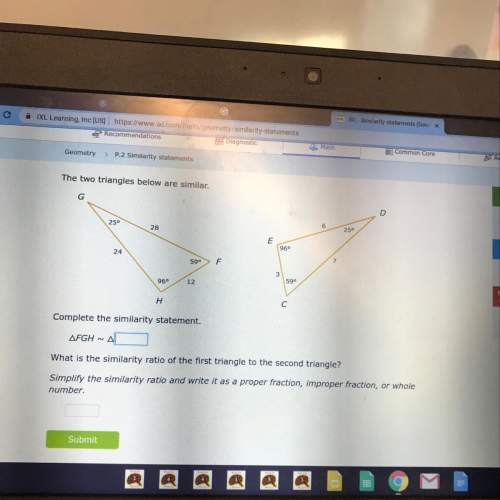
Mathematics, 25.01.2021 22:50 starfox5454
The graph that represents the function f(x)=2∙4^(x+1) has a y-intercept of . The graph is increasing by a common ratio of and to the right is and to the left is .

Answers: 1


Other questions on the subject: Mathematics

Mathematics, 21.06.2019 19:20, hahah265
Suppose that a households monthly water bill (in dollars) is a linear function of the amount of water the household uses (in hundreds of cubic feet, hcf). when graphed, the function gives a line with slope of 1.65. if the monthly cost for 13 hcf is $46.10 what is the monthly cost for 19 hcf?
Answers: 3

Mathematics, 21.06.2019 20:30, icantspeakengles
In priyas math class there are 10 boys and 15 girls. what is the ratio of boys to girls in priyas math class? express your answer as a decimal
Answers: 1

Mathematics, 21.06.2019 21:30, xaguilar
Data from 2005 for various age groups show that for each $100 increase in the median weekly income for whites, the median weekly income of blacks increases by $105. also, for workers of ages 25 to 54 the median weekly income for whites was $676 and for blacks was $527. (a) let w represent the median weekly income for whites and b the median weekly income for blacks, and write the equation of the line that gives b as a linear function of w. b = (b) when the median weekly income for whites is $760, what does the equation in (a) predict for the median weekly income for blacks?
Answers: 2
You know the right answer?
The graph that represents the function f(x)=2∙4^(x+1) has a y-intercept of . The graph is increasing...
Questions in other subjects:






Biology, 26.09.2019 22:30

Mathematics, 26.09.2019 22:30






